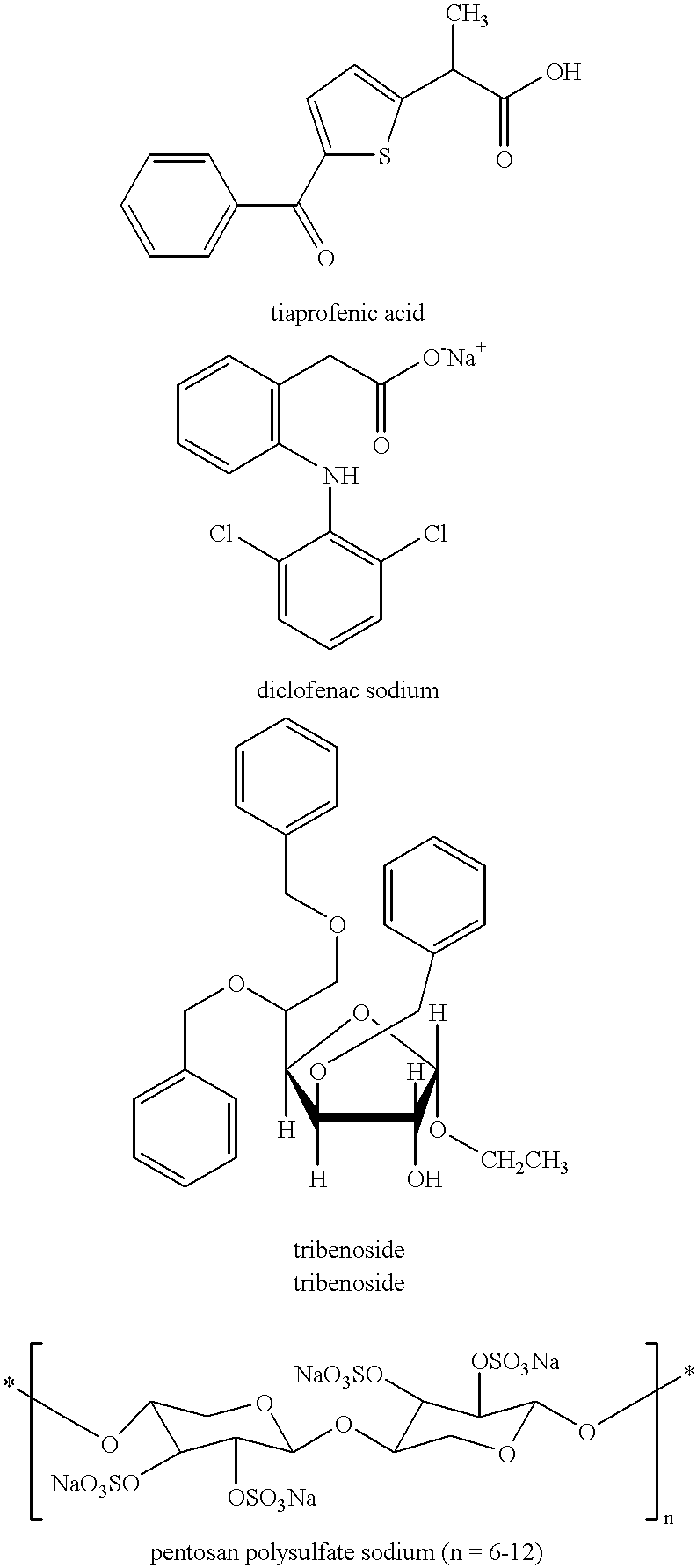Treating or preventing the early stages of degeneration of articular cartilage or subchondral bone in mammals using carprofen and derivatives
a technology of articular cartilage and carprofen, which is applied in the direction of biocide, heterocyclic compound active ingredients, drug compositions, etc., can solve the problems of oa pathophysiology, oa cytokine action is not well understood, and the upregulation of il-1 may have long-term adverse effects on cartilage maintenan
- Summary
- Abstract
- Description
- Claims
- Application Information
AI Technical Summary
Problems solved by technology
Method used
Image
Examples
example 1
Three groups of skeletally mature crossbred mammals, weighing 20 to 25 kg each, are used in a study whose objective is to demonstrate subchondral bone changes which are a marker for the early stages of articular cartilage degeneration in mammals, and which, accordingly, may be used to identify mammals which are appropriate candidates for pharmacologic intervention.
In Group I, osteoarthritis is induced in these mammals (n=4) using the surgical procedure described in Pelletier, J-P.; Martel-Pelletier, J.; Altman, R. D.; Ghandur-Mnaymneh, L.; Howell, D. S.; Woessner, J. F., Jr.; "Collagenolytic Activity and Collagen Matrix Breakdown of the Articular Cartilage in the Pond-Nuki Mammal Model of Osteoarthritis", Arthritis Rheum, 26, 1983, 866-874; wherein said mammals are anesthetized with intravenous injection of sodium pentobarbital (25 mg / kg), and the anterior cruciate ligament of the right knee is sectioned by a stab incision. After surgery the mammals are housed and allowed to exercis...
PUM
| Property | Measurement | Unit |
|---|---|---|
| concentration | aaaaa | aaaaa |
| concentration | aaaaa | aaaaa |
| concentration | aaaaa | aaaaa |
Abstract
Description
Claims
Application Information
 Login to View More
Login to View More - R&D
- Intellectual Property
- Life Sciences
- Materials
- Tech Scout
- Unparalleled Data Quality
- Higher Quality Content
- 60% Fewer Hallucinations
Browse by: Latest US Patents, China's latest patents, Technical Efficacy Thesaurus, Application Domain, Technology Topic, Popular Technical Reports.
© 2025 PatSnap. All rights reserved.Legal|Privacy policy|Modern Slavery Act Transparency Statement|Sitemap|About US| Contact US: help@patsnap.com



